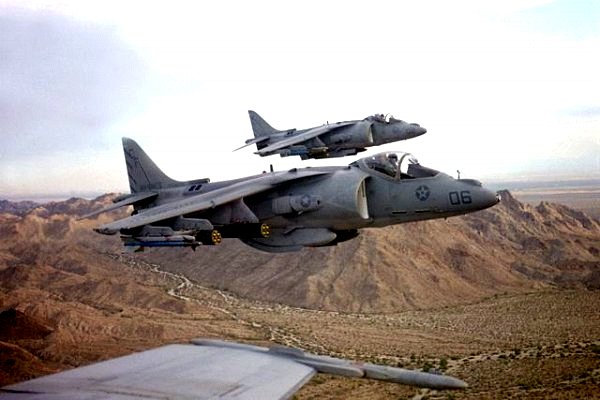
History of The Harrier
Since the Marine Corp first received the AV-8B they have consistently chapioned the VTOL Capability. Preliminary
studies were made in the mid-1970's, and the prototype YAV-8B made its first flight from St. Louis in November
1978. The prime contractor for the project was McDonnell Douglas, who forged a partnership with British Aerospace.
the USMC has ordered 328 Harrier II's, of which 28 are two seater trainers. Delivery of the Harriers began in January
of 1984, the first unite to receive the type being VMAT-203 at Cherry Point, North Carolina. The Harrier has replaced
the
aging A-4 Skyhawk. STOVL means , Short Take Off Vertical Landing. The Harrier can take off vertically or roll off
a
commando ship at 55 MPH. If the Harrier ever encounters a threat my enemy fighters, it can defend itself Sidewinder
or Ammram missiles. The harrier can also quickly deaccelerate causing the enemy to over shoot. In 1984 MCD was
awarded a contract for a Night Attack version of the Harrier. The Night Attack version is equiped with a FLIR sensor
with the pilot wearing Night Vision Goggles. All of the Harrier II's have been upgraded to the Night Attack standard.
Specifications
Origin
McDonnell Douglas Corporation, St. Louis Missouri/British Aerospace,
Kingston-upon-Thames, Surrey
Type
Single Seater STOVL Close Air Support
Engines
One 23,400 Rolls Royce F402-408 vector thrust turbofans
Dimensions
Span 30ft 4in, Lenth 47ft 9in, Height 11ft 8in, Wing Area 230sq ft
Performance
Max speed S/L 602kt at altitude, ceiling 50,000ft
Armament
One 25mm GAU-12/U five barrel cannon with 300 rounds;combination of Mavricks and
Hellfire for Air-Ground; Air-Air Combo of 6 Ammram and Sidewinders
History
First Flight 9th of November 1978; Service entry 1983